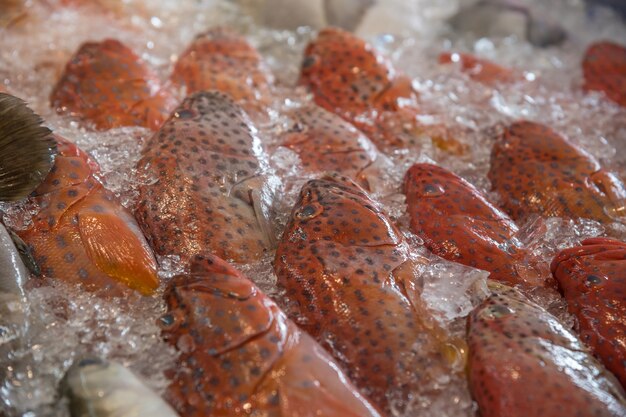Keeping It Fresh: How Long Can Crab Legs Stay in the Refrigerator?
Crab legs, with their delicate and succulent flavor, are a seafood lover's delight. Whether you're grabbing them fresh off the boat or from the local market, the question remains: how long can these tasty morsels stay fresh in the refrigerator? In this comprehensive guide, we will explore the best practices for storing crab legs, understanding their shelf life, and ensuring they maintain their quality until you're ready to enjoy them.
🦀 Understanding the Freshness of Crab Legs
Crab legs, like most seafood, are best consumed fresh. Their delicate nature means they can spoil quickly if not stored properly. But what exactly are the factors affecting the freshness of crab legs?
Factors Influencing Shelf Life
- Type of Crab: Different types of crab, such as king crab, snow crab, or Dungeness crab, might have varying shelf lives.
- Initial Quality: The freshness level when purchased plays a huge role. Freshly caught crab has a longer shelf life than crab that's been sitting out.
- Storage Conditions: Temperature plays a critical role. Keeping crab legs in consistently cool conditions is crucial for longevity.
- Purchased Form: Frozen vs. fresh. Frozen crab legs, when thawed, will have different storage needs and times.
⏰ Storing Crab Legs in the Refrigerator: How Long is Too Long?
Once you bring crab legs into your kitchen, storing them correctly prolongs their quality and safety. Here's a detailed look at how long crab legs can last in your refrigerator and where to store them for optimal freshness.
Fresh Crab Legs
Optimal Storage Time: 1-2 days. Fresh crab legs should be consumed as soon as possible. If you need to store them, keep them in the coldest part of your refrigerator, wrapped in a damp towel to maintain moisture.
Tips for Fresh Storage:
- Store in a shallow covered container or wrap tightly in plastic wrap.
- Place a tray of ice beneath them in the fridge to help keep them cold.
Thawed Frozen Crab Legs
Optimal Storage Time: 2-3 days. Once you thaw crab legs, treat them as fresh and consume them quickly for the best taste and safety.
Tips for Thawed Storage:
- Never refreeze crab legs after they've been thawed.
- Maintain an even temperature to avoid bacterial growth.
Cooked Crab Legs
Optimal Storage Time: 3-5 days. If you've cooked the crab legs, their shelf life extends slightly in the refrigerator.
Tips for Cooked Storage:
- Store in an airtight container or tightly wrapped in aluminum foil or plastic wrap.
- Make sure the fridge temperature is consistently below 40°F (4°C).
🧊 Freezing Crab Legs: A Longer Storage Solution
For those who want to enjoy crab legs beyond the short refrigerated timeframe, freezing is an excellent option. Here’s how to do it properly:
Freezing Fresh Crab Legs
- Preparation: Clean the crab legs thoroughly, pat them dry to remove excess moisture.
- Storage Method: Use a vacuum sealer for the best results, or wrap them tightly in heavy-duty aluminum foil and place in a freezer bag.
- Freezer Duration: 6-12 months. Properly stored crab legs can maintain quality for up to a year.
Freezing Cooked Crab Legs
- Preparation: Cool the crab legs promptly after cooking to avoid bacteria growth.
- Storage Method: Ensure they are completely dry before wrapping and sealing.
- Freezer Duration: 6 months. Keeping cooked crab legs frozen preserves their flavor and texture for a decent period.
🚩 Recognizing Spoilage: When to Say Goodbye
Knowing when crab legs have gone bad is crucial for your safety. Here's how you can tell if it’s time to discard them:
- Smell: Off or overwhelming fishy odor is a common sign of spoilage.
- Texture: Slimy or sticky texture rather than firm and moist.
- Color: Discoloration, particularly if the meat looks grayish or suggests freezer burn.
📝 Handy Summary Tips
Here are some quick tips to keep at your fingertips when handling crab legs:
- Plan Ahead: Aim to buy crab legs close to when you plan to cook them.
- Keep It Cold: Store in the coldest part of the fridge.
- Use Airtight Storage: Prevent bacteria with proper wrapping or airtight containers.
- Quick Consumption: Aim to eat fresh or thawed crab legs within 1-3 days.
- Check for Spoilage: Be vigilant about smell, texture, and color changes.
🍽 Related Insights: Making the Most of Your Crab Legs
Crab legs aren't just delightful due to their flavor, but also because of the numerous ways you can serve them. From classic butter dips to lavish pasta dishes, the key to maximizing the enjoyment from your crab legs is preparation and preservation. Consider these methods as part of your creative culinary journey:
Cooking Methods
- Boiling: A popular method that helps retain flavor.
- Grilling: Adds a smoky flavor and caramelizes the natural sugars.
- Steaming: Maintains moisture and tenderness.
Accompaniments
- Garlic Butter Sauce: Classic choice that enhances the flavor.
- Lemon Wedges: Adds a fresh and tangy twist.
- Herb Seasoning: Infuses aroma and depth.
🎯 The Long and Short of Crab Leg Storage
Ensuring that your crab legs are as delightful and fresh as possible requires attention to storage details and a prompt consumption timeline. Whether you're dealing with fresh, thawed, or cooked crab legs, maintaining the right environmental conditions and recognizing spoilage signs are key to a rewarding seafood experience. By following these guidelines and tips, you can savor the taste of crab legs as if they’ve just been pulled from the sea, even days after initially purchasing them. Bon appétit!
